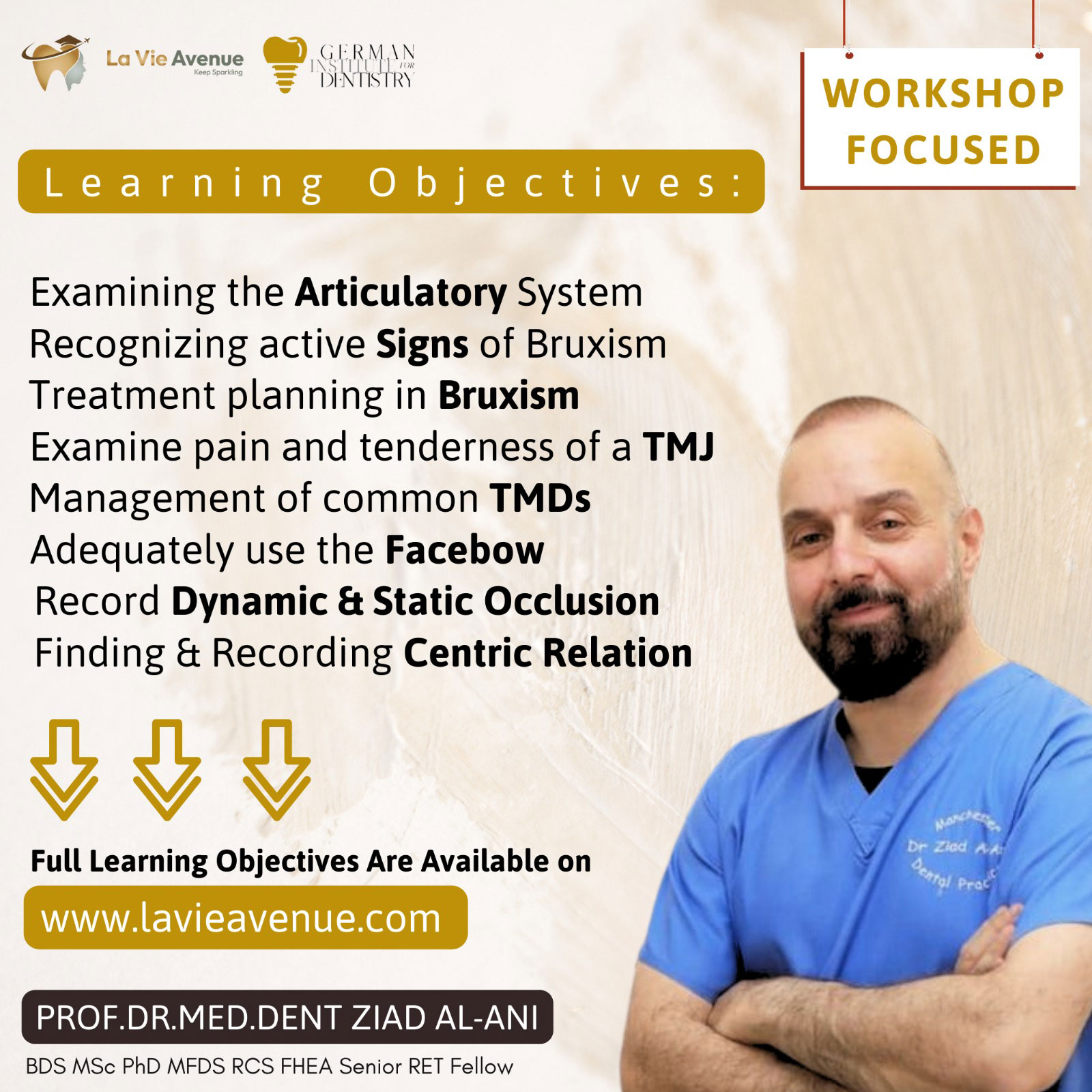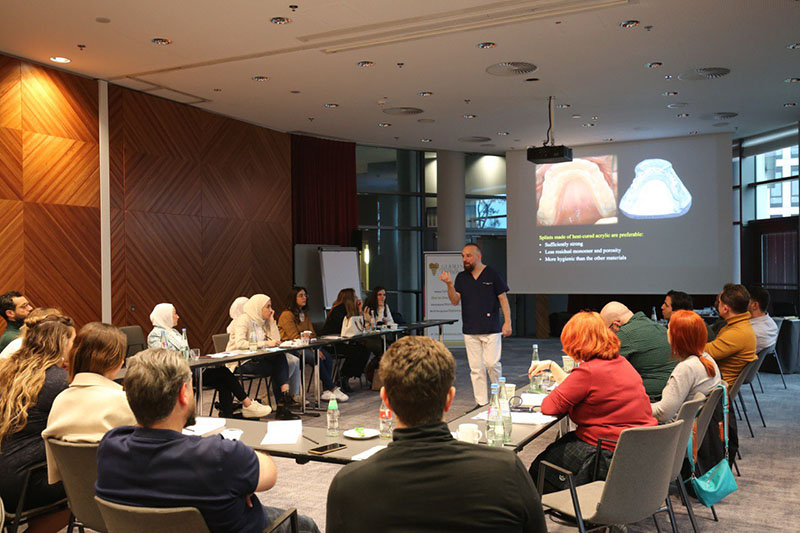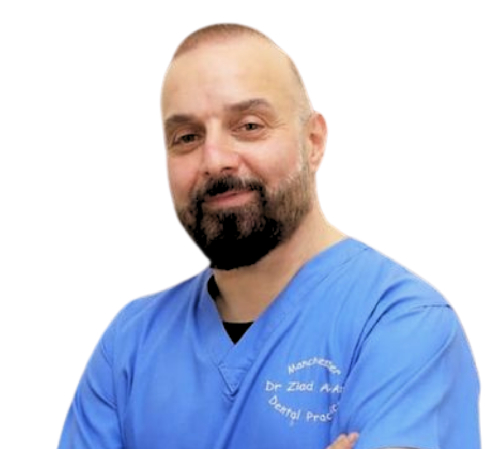

Course description:
Dentists are constantly involved in the management of their patients’ occlusion during routine restorative dental procedures. This is because the occlusal surfaces of the teeth are usually involved in the provision of restorations. The significance of this obvious statement lies both in the relationship that the occlusion has within the articulatory system and the effect that trauma from the occlusion may have on the tooth, and its periodontal support. All dentists wish to avoid these problems; in reality dentists want predictable success for their patients and themselves.
Successful management of the articulatory system leads to predictable fitting of restorations and prostheses, longevity and absence of iatrogenic problems, patient comfort and occlusal stability.
This course will take the participants in a systematic journey from A to Z in the management of the articulatory system in clinical practice starting from the simple restorative to the advanced restorative care.
At the end of this course, the participants should be competent at the following areas:
- Examining the articulatory system
- Understand the conformative approach
- How to record Dynamic Occlusion
- How to finding centric relation and recording it and knowing the clinical
Importance of this procedure
- Record static occlusion using an innovative technique
- Record Dynamic Occlusion
- Finding centric relation and recording it and knowing the clinical importance of this procedure
- Adequately use the facebow
- Transferring records to an articulator
- Effectively use the semi-adjustable articulator
- Formulate a good treatment planning in advanced restorative care
- Consider occlusion in treatment planning
- The use of facebows and articulators
- Recognizing active signs of bruxism
- Planning treatment in bruxism patients
- Management of bruxism including occlusal appliances
- Indications of splints in the management of severe tooth surface loss
- How to increase OVD (Clinical Cases)
- Copying the guidance
Learning objectives:
Upon completion of this educational activity, the participants should be able to:
- Examining the articulatory system using a comprehensive approach
- Understand the conformative approach
- How to record Dynamic Occlusion
- How to finding centric relation and recording it and knowing the clinical importance of this procedure
- Record static occlusion using an innovative technique
- Record Dynamic Occlusion
- Finding centric relation and recording it and knowing the clinical importance of this procedure
- Adequately use the facebow
- Transferring records to an articulator
- Effectively use the semi-adjustable articulator
- Formulate a good treatment planning in advanced restorative care
- Consider occlusion in treatment planning
- The use of facebows and articulators
- Indications of splints in the management of severe tooth surface loss
- How to increase OVD (Clinical Cases)
- Copying the guidance
- How to examine pain and tenderness of a TMJ
- How to Palpate TMJs
- How to perform Auscultation
- How to examine the lateral pterygoid muscle
- The use of MRI in the diagnosis of DD
- When and how to treat DD
- The use of Anterior Repositioning Splint (ARPS) in the management of DD
- How to differentiate between Disc Displacement with Reduction and Disc Displacement without Reduction
- When and how to refer cases of Disc Displacement without Reduction
- Recognizing active signs of bruxism
- Planning treatment in bruxism patients
- Management of bruxism including occlusal appliances
- History taking and clinical examination
- How to examine the masticatory muscles
- Bimanual manipulation in finding CR
- Recording CR
- How to make a stabilization splint
- How to balance a stabilization splint
- Diagnosis and Management of Osteoarthrosis
- Physiotherapy in the Management of OA
Timetable
Day 1
TMD in Dental Practice: A Problem-Based Approach
LECTURES
- Examination of the articulatory System
- Diagnosis of the most common TMDs
- Making a Diagnosis of Disc Displacement with Reduction (DD)
- How to examine pain and tenderness of a TMJ
- The use of MRI in the diagnosis of Disc Displacement (DD)
- The use of Anterior Repositioning Splint (ARPS) in the management of DD
- Making a Diagnosis of Disc Displacement without reduction
- Management of Disc Displacement without Reduction
- Mayofascial Pain (MP) and Degenerative Diseases of a TMJ
- The use of Stabilisation Splint in the management of MP
- Diagnosis and Management of Osteoarthrosis (OA)
- Physiotherapy in the Management of OA
Workshops
- Examination of the articulatory system
Day 2
Occlusion in dental practice 1
LECTURES
- The Conformative Approach
- Static Occlusion and Centric Relation
- Dynamic Occlusion
Workshops
- Finding and Registering Centric Relation
- The use of Facebow and Semi-adjustable Articulator
- Bruxism and its Management in Dental Practice
- The use of Stabilisation Splint in the Management of Bruxism
- Occlusion in Advanced Restorative Care
- How to make a Stabilisation Splint
- Adjusting Stabilisation Splint


